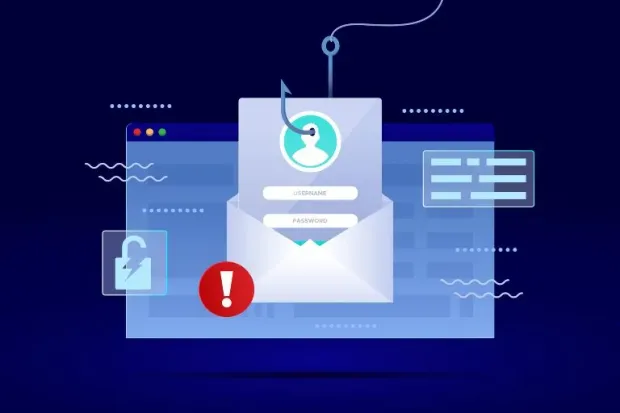Introduction
In this digital transformation age, mobile applications' utility has increased. It has even revolutionized how we interact with technology, offering the utmost convenience and access to several services at our fingertips.
Mobile apps have become integral to our modern life, from managing finances to engaging in social networks. However, this global adoption of mobile technology has also gained the attention of cybercriminals, who constantly seek opportunities to exploit vulnerabilities and manipulate user data.
And when it comes to extensive usage of mobile applications, the most pervasive and dangerous threat mobile app users face is phishing. This crafty technique exploits the natural urge to click, tap, or enter information without suspicion.
Phishing attacks targeting mobile applications have witnessed a concerning rise, driven by refined social engineering tactics and convincing fraudulent schemes customized to the mobile application.
Here, we will help you gain more profound knowledge on MFA login for mobile applications, practical strategies that can be used, and the challenges users face.
What is a Phishing-resistant MFA login?
Phishing-resistant Multi-Factor Authentication (MFA) login is a unique authentication technique designed to fight the increasing threat of phishing attacks. The early traditional MFA methods provided added security and may still be vulnerable to phishing attempts where hackers trick users into providing their authentication credentials.
Phishing-resistant MFA aims to improve the authentication process by utilizing more secure and dynamic factors resistant to phishing tactics.
Challenges Faced by Users Accessing Data from Mobile Apps
Enforcing a phishing-resistant MFA login method for mobile applications comes with numerous challenges. Here are the top six challenges that developers and organizations may come across:
- User Experience: Balancing security with a convenient user experience is crucial. Introducing extra authentication steps can lead to friction for users, discouraging them from adopting the MFA login method. Maintaining a balance between security and user convenience is essential for successful MFA adoption in mobile applications.
- Platform and Device Fragmentation: A mobile device comprises various platforms (iOS, Android) and a wide range of models with different hardware capabilities. Hence, ensuring uniform and reliable MFA across this fragmentation can be challenging, requiring developers to adapt authentication methods according to each platform and device.
- Cross-App Integration: For a convenient user experience, MFA login should be incorporated across various mobile apps within an organization. Achieving this level of integration may create many technical challenges, especially when dealing with third-party applications that may not support MFA.
- Phishing Simulation and Awareness: Even with strong MFA incorporated into the system, user awareness remains critical. Educating users about phishing attacks and creating fake phishing attacks for understanding purposes to reinforce their vigilance can be time-consuming and require several efforts to maintain a security-conscious user base.
These challenges may seem tough to overcome; however, overcoming them is crucial for achieving a highly secure and user-friendly Phishing-Resistant MFA login solution for mobile applications.
Top 6 Strategies for Mobile Applications - Phishing-Resistant MFA
The main objective of MFA login is to ensure that even if a hacker can access a user's login credentials through a phishing attack, the additional authentication methods can act as a robust defense against unauthorized access.
Since users are more inclined to use mobile applications today, it is crucial to implement defensive techniques like Phishing-resistant MFA login to protect user information from cyberattacks.
Below, we have curated a list of the top 6 phishing-resistant strategies for mobile applications:
-
Biometric Authentication: Utilize the built-in biometric sensors on mobile devices, like fingerprint scanners, facial recognition, and iris scans, for safe user authentication. Biometric data is unique to each individual, making it resistant to phishing attacks and significantly improving the overall security of the login process.
-
Push-Based Authentication: Implement a push-based authentication method, where the mobile app sends a real-time prompt to the user's trusted device, asking for permission to log in. Users can accept or deny login attempts, providing added security that lowers the risk of phishing attempts.
-
One-Time Password via Mobile App: Rather than sending OTPs through SMS, try delivering them through the mobile application. OTPs generated via the app are more secure as they avoid the vulnerabilities associated with SMS-based OTPs, which attackers can manipulate.
-
Hardware Tokens: Incorporate hardware tokens or security keys that connect directly to mobile devices. These tokens generate time-based OTPs or cryptographically signed authentication codes, providing a phishing-resistant alternative to traditional OTP methods.
-
Contextual Authentication: Apply contextual authentication, which analyzes various factors like device location, IP address, user behavior patterns, and login time, to assess the legitimacy of the login attempt. Strange login behavior triggers additional authentication measures, providing more security against phishing attacks.
-
Adaptive Authentication: Utilize adaptive authentication techniques that continuously observe user behavior throughout the user session. Adaptive authentication adjusts the security level based on user behavior and risk factors, providing a convenient yet safe experience for authorized users while blocking suspicious activities.
With the help of these strategies, mobile application developers can build a solid phishing-resistant MFA login system that improves data security and ensures a hassle-free and user-friendly login experience.
Conclusion
In short, phishing-resistant MFA login technique for mobile applications is a dire need in today’s digital landscape. In a world where individuals are highly dependent on mobile devices and applications for most of their tasks, it is easy for cyber attackers to take advantage of this situation.
Applying the MFA login method to mobile applications will increase data security and reliability. Hence, being an impactful communication tool, mobile devices and applications can now resist cyber-attacks.



